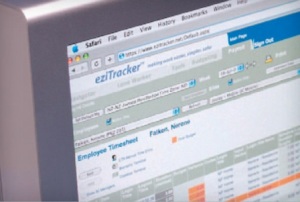
Most enquiries we receive are from cleaning companies who suffer from payroll processing pains.
Over the last five years many businesses have moved away from sub-contracting into direct labour, but in many cases their systems and processes have not been updated to handle this change.
A cleaning company’s payroll ‘pains’ also creep up as staff numbers increase. Doing payroll for 100+ staff on paper, spreadsheets, and systems not designed for the job will start to consume more administrative time, which can be costly.
Therefore, it is important for cleaning companies to realise the value of an efficient process, supported by good systems, to deliver to the business.
What causes inefficiencies in processing payroll?
Your payroll process broadly consist of the following steps:
- Setting budgets, rosters by site, and assigning staff
- Publishing timesheets per fortnight
- Capturing hours, manage exceptions, and populating timesheets
- Perform award interpretation on actual approved hours
- Approval and finalise pay
- Statutory pay process including tax, super, payslip, and STP
This article will examine some reasons companies suffer with payroll pains and what can be done to improve the process.
Separate systems
The number one culprit of an inefficient process is trying to manage all the above in separate systems, not designed for your industry. Unintegrated systems means people need to move data around and massage it into the right shape. This costs money (in the form of wages) and is prone to human error.
A common example of this is where a business uses Microsoft Excel to capture timesheet information, and then a separate system to process payroll. Area managers would typically amend the spreadsheets with adjustments such as annual leave, absence without pay or extra hours worked. Excel is then used to check “hour” budgets by site before the timesheets are sent to payroll for processing.
Now it is payroll’s responsibility to “interpret” these hours into pay types (what the employees will see on their payslips), and manually key them into the system. The problems here are obvious:
- Payroll staff have to manually interpret working hours into the Modern Cleaning Award. This is a big timewaster and a huge potential for errors.
- Manually re-keying 100-200 employees’ payroll information into any system will take a lot of time, and just one mistake can take hours to rectify.
Perhaps the most worrying thing about a process like this is there is no visibility of actual VS budget in dollar ($) terms before you are ready to pay. So you could be paying a full time employee the overtime rate (1.5) for a shift that was set at day (1.0), but still believe the site is on budget because the interpreted cash value is only visible at the end of the process.
This problem is not limited to simple systems like Excel. One of my current projects is a client who uses a large, expensive workforce management system (WMS) which is not integrated to their back-office payroll.
Although they spend nearly $60k per annum on their WMS, they still cannot see simple things such as employee leave balances and actual dollar costs on site timesheets. This is all down to the fact they rely on separate systems that do not integrate properly.
Assignment of responsibility
We have a few hundred cleaning companies using our centralised payroll system, and it is easy for us to spot the differences between the efficient and inefficient ones. Businesses with the best processes are those that spread the workload across the individuals who own the source information.
Area managers/CSMs who know about staff movements oversee changing site assignments, which keeps timesheets accurate. Those that control wage budgets ensure the latest ones are set on the contract.
Supervisors who know about staff absences update timesheets day-by-day. This means information gets into the system quicker and everyone is responding to one version of the truth.
The alternative is where roles “feed” information to a central point who is then responsible for updating the system/s. This can lead to delays, misinterpretations, and errors.
A few years back one of our clients grew from 100 to 900 employees in a short period of time. They were reluctant to get their CSMs involved in the payroll process so instead asked them to send their timesheets to one person each fortnight for processing. This was a disaster! Sometimes this person would get more than 50 site timesheets just a few hours before the money had to hit the bank.
What’s worse, the next day he would receive hundreds of adjustments because the original timesheets were incorrect. Not to mention that after a while almost none of the timesheets contained the right staff anymore, because no adjustments were being made.
With a bit of training and assignment of responsibility to CSMs, this process is now much more efficient. What’s more, because the CSMs are much more hands on in the process they are better at keeping sites under budget.
Sub: Additional administration
A number of processes that do not directly relate to getting pay out the door are sometimes forgotten, only to cause unnecessary administration down the track.
- Not managing additional hours properly
If I had to guess, I would say nine out of 10 prospects I speak to do not manage “additional wage hours” properly. This is where an employee works extra hours on an ‘out of scope’ job such as an extra clean or steam clean.
Hours for these jobs tend to be lumped together with standard cleaning hours, meaning they are not reported on separately. As a result, finance will have to spend time down the track in Excel splitting these costs out if they want accurate reporting. This also has a potential devastating effect in the form of missed income. If costs are not clearly split out the business might forget to invoice for these additional works.
Companies need to manage additional cleaning separately from contracted cleaning hours and their systems need to support this. What’s more, an automated process of invoice generation should exist on all extra hours to ensure no income is missed.
- Forgetting about on costs
On costs such as annual leave accrual, payroll tax and Workcover are cost associated with paying staff. These costs are real to the business and need to be accrued to the balance sheet if you wish to maintain an accurate set of accounts.
As a business that delivers services to sites, it is also important these costs be associated with the site that is responsible for them. Many companies do not actively accrue for these costs in real-time and leave the administration to a later date, which makes it much more time consuming. What’s more, reporting is not accurate all the time and decisions could be made on wrong information.
It is important therefore to have a clear on cost methodology and a system that accurately accrues for these costs during each pay run. This will save wasted time on administration and provide accurate information.
There is a lot more than can be said about challenges and areas for improvement in the payroll process. The most important step is to realise that it is a massive part of any cleaning company administrative processes and therefore deserves constant attention and improvement.
Mark Fermor is director of Facility ERP
This article first appeased in the September/October issue of INCLEAN magazine
Comment below to have your say on this story.
If you have a news story or tip-off, get in touch at info@3.106.117.80.
Sign up to INCLEAN’s newsletter.



